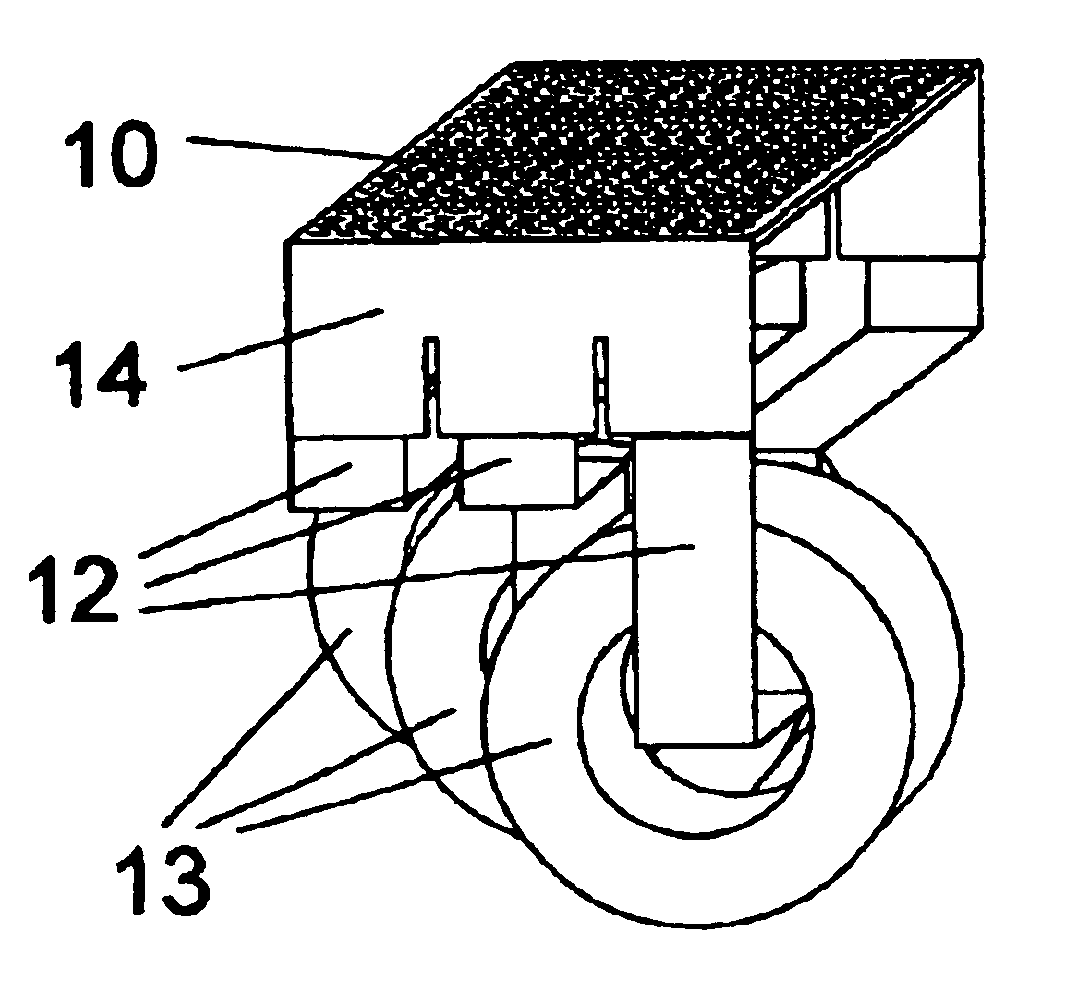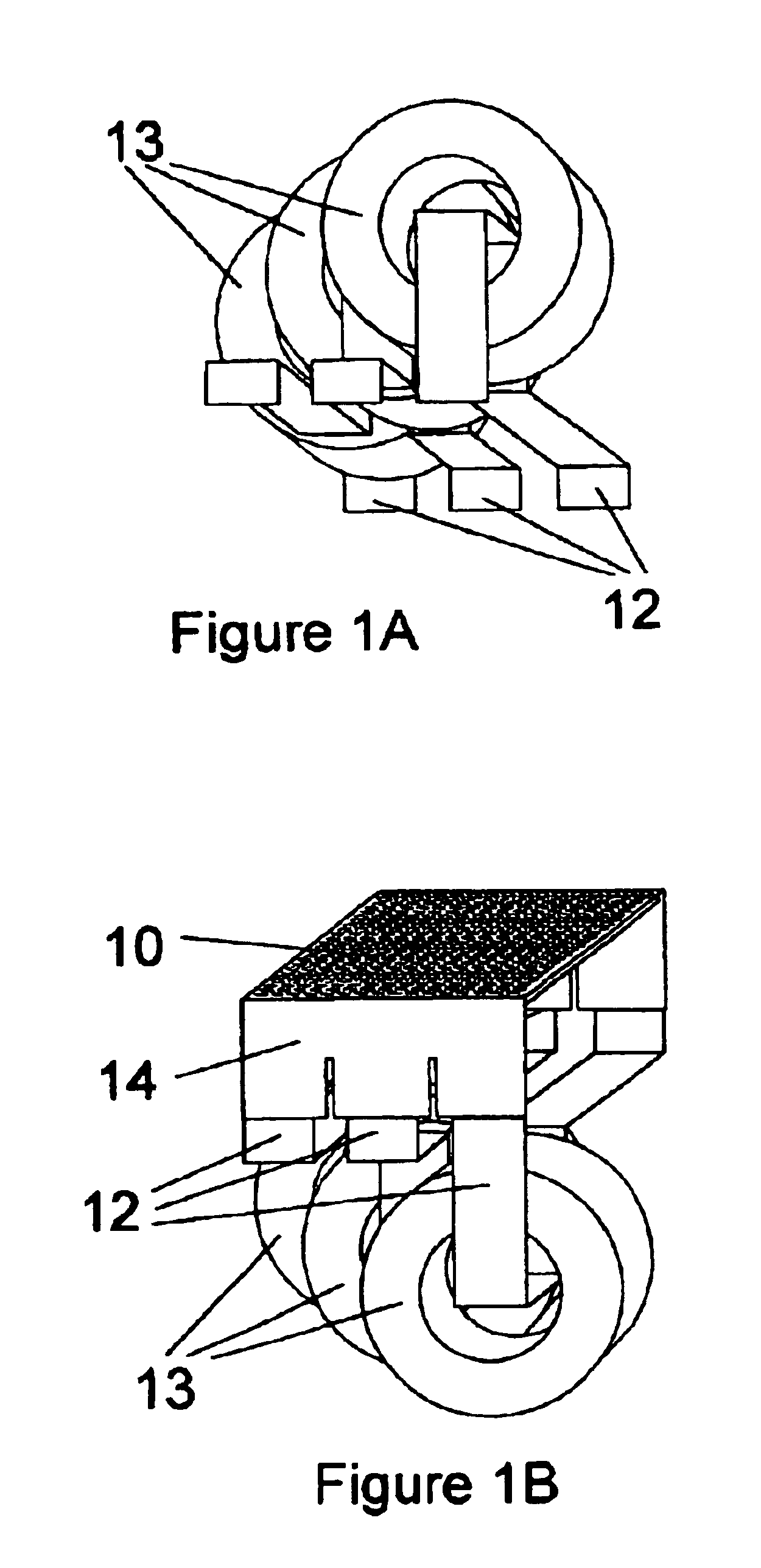Zone heating of specimen carriers
a specimen carrier and heating technology, applied in the field of zone heating of specimen carriers, can solve the problems of increasing the differential that may be measured within a liquid sample, limiting the maximum rate of change of temperature that may be practically employed, and heat generation in the heater, so as to improve the thermal performance, reduce the cycle time, and increase the cost
- Summary
- Abstract
- Description
- Claims
- Application Information
AI Technical Summary
Benefits of technology
Problems solved by technology
Method used
Image
Examples
embodiment
Direct Current Embodiment
[0083]FIG. 16 shows a series of four schematic representations of a direct current embodiment of the present invention. A specimen carrier block is shown as 200. There are two DC power supplies 201, 202, with polarity as signified on the figure. The power supplies each have leads 203,204 which may be positive or negative leads. These are connected across respective opposite corners of the carrier, as shown. Approximate current paths through the block 200 are shown in heavy black in the Figures.
[0084]The current path through the carrier may be changed by altering whether one or both of the supplies are on or off.
[0085]Hence in FIG. 16A the supply 201 is on and supply 202 is off, producing diagonal current flow in the carrier.
[0086]In FIG. 16B the supply 201 is off, and 202 is on, producing current flow along the other diagonal.
[0087]In FIG. 16C, supply 201 and 202 are both on, producing horizontal flow at upper and lower edge regions of the carrier.
[0088]In F...
PUM
| Property | Measurement | Unit |
|---|---|---|
| thickness | aaaaa | aaaaa |
| current | aaaaa | aaaaa |
| current | aaaaa | aaaaa |
Abstract
Description
Claims
Application Information
 Login to View More
Login to View More - R&D
- Intellectual Property
- Life Sciences
- Materials
- Tech Scout
- Unparalleled Data Quality
- Higher Quality Content
- 60% Fewer Hallucinations
Browse by: Latest US Patents, China's latest patents, Technical Efficacy Thesaurus, Application Domain, Technology Topic, Popular Technical Reports.
© 2025 PatSnap. All rights reserved.Legal|Privacy policy|Modern Slavery Act Transparency Statement|Sitemap|About US| Contact US: help@patsnap.com



